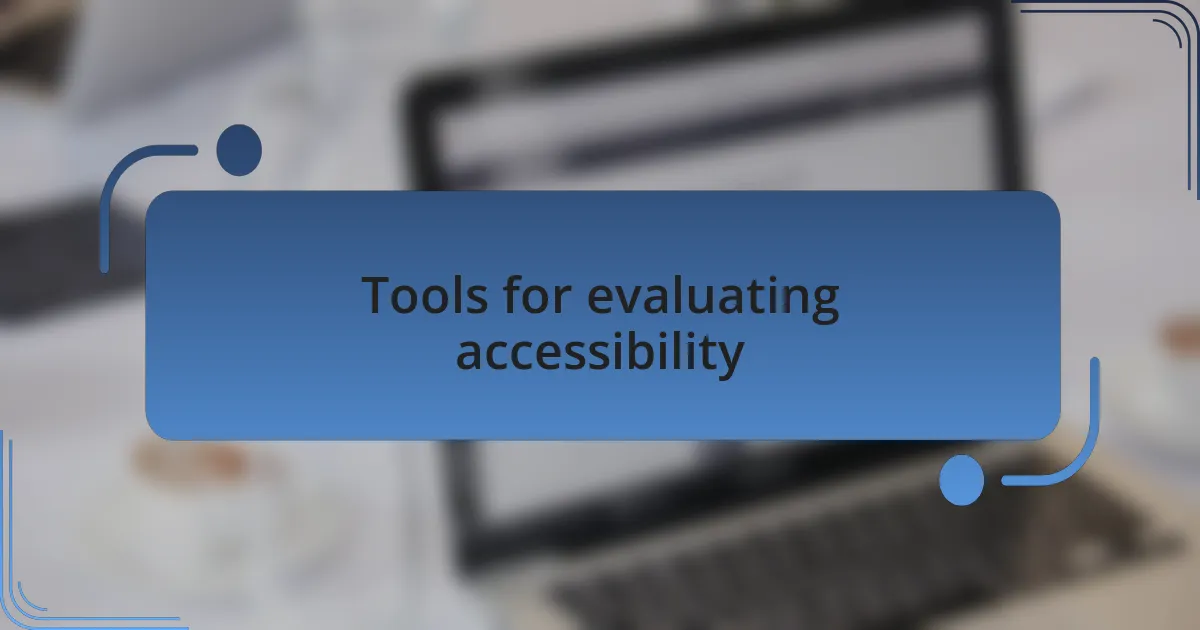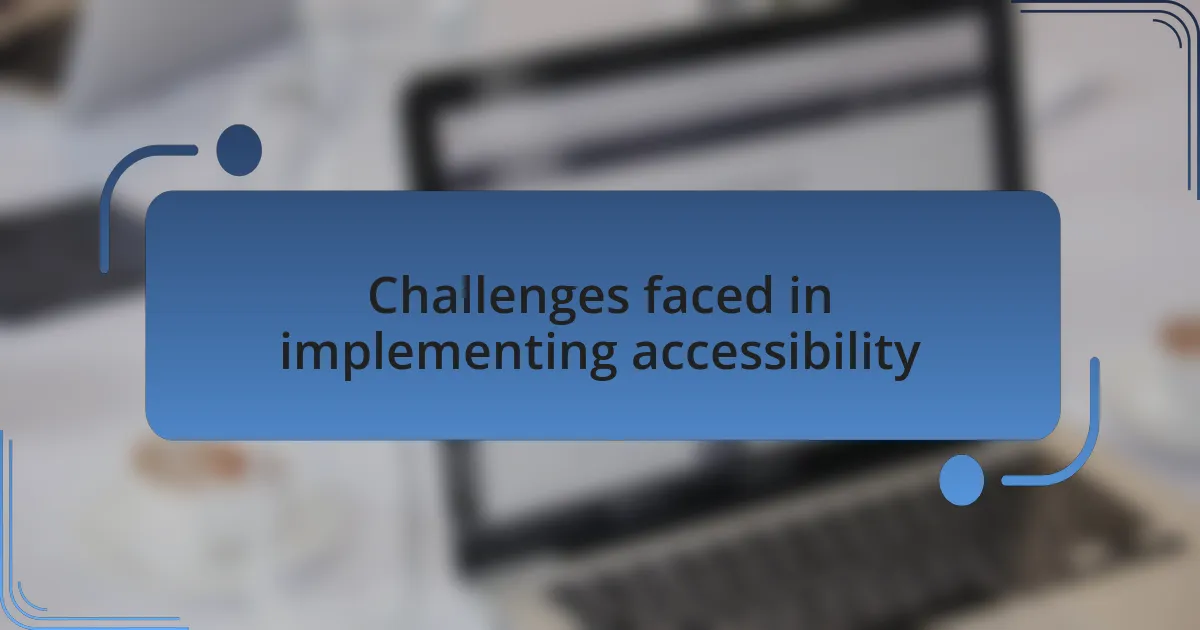Key takeaways:
- Tools like WAVE and Axe are essential for identifying accessibility issues in web design.
- Real-world user testing provides invaluable feedback that complements automated tools.
- Lack of awareness among designers can hinder the implementation of accessibility features.
- Time and budget constraints often lead to overlooking important accessibility considerations.

Tools for evaluating accessibility
When I first started focusing on accessibility in web design, tools like WAVE and Axe became my go-to resources. These tools helped me identify issues that I might have overlooked, making me realize just how crucial it is to view my designs through a more inclusive lens. Have you ever wondered how many users struggle with content that seems so straightforward to us?
I remember using a color contrast checker tool early on and being shocked at how some color combinations I thought were beautiful were actually hard for visually impaired users to read. It made me rethink my entire approach to color in web design. This experience pulled me deeper into the world of accessibility, highlighting the need for constant evaluation and understanding of how every design choice impacts users.
Additionally, user testing can’t be overlooked. I once coordinated a session with people who have varying disabilities, and their feedback was eye-opening. Hearing their experiences made me appreciate the value of real-world testing alongside automated tools. Isn’t it amazing how the voices of users can shape our design decisions?

Challenges faced in implementing accessibility
Implementing accessibility features often hits roadblocks due to a lack of awareness among designers. I recall a time when I presented a design that included alt text for images, only to be met with confused expressions from my team. It struck me then how critical it is to educate everyone involved in the process about the importance of these seemingly small details.
Another challenge I faced was the pushback on budget and time constraints. I once worked on a project where the deadline was so tight that accessibility considerations were brushed aside. I remember feeling frustrated because I knew that without proper planning, we could potentially alienate a significant number of users. Have you ever felt that your commitment to inclusivity was undermined by time pressures?
Lastly, the ever-evolving nature of web technologies adds another layer of complexity. I find myself constantly learning about new guidelines and tools, which can be overwhelming. There have been moments when I felt lost trying to keep up with these changes, wondering if I would ever be fully equipped to create universally accessible designs. It’s a reminder that the journey towards accessibility is ongoing, requiring persistence and dedication.